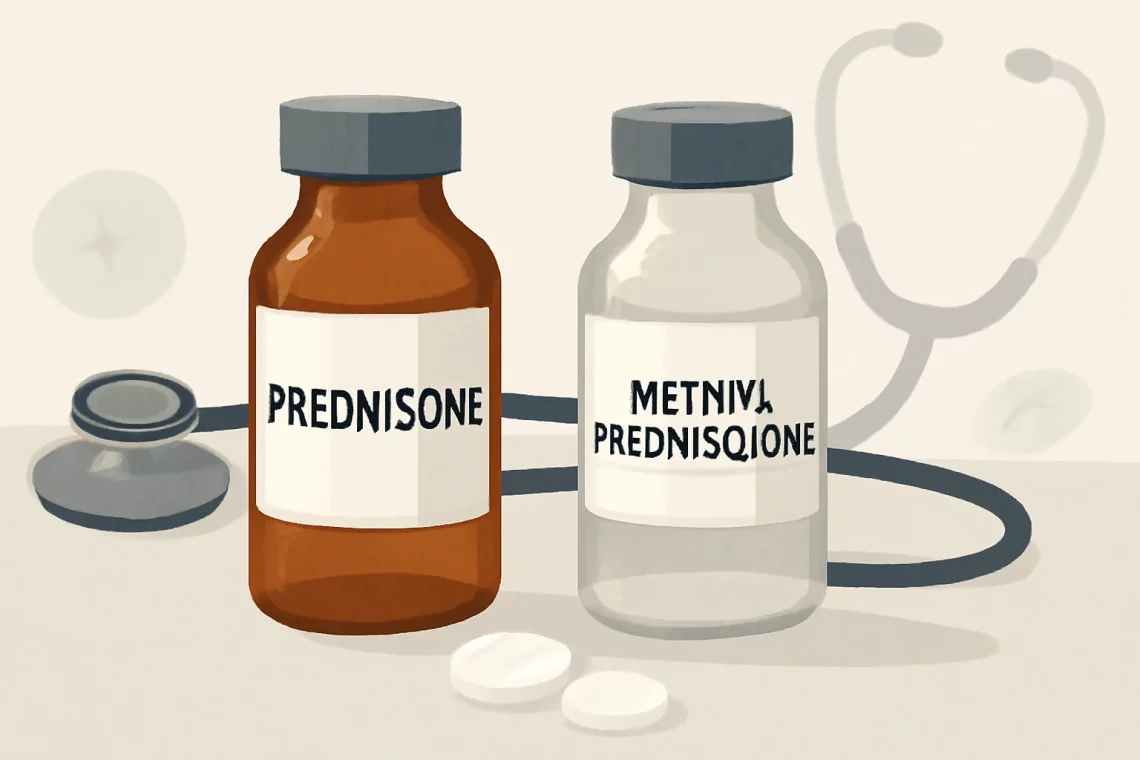
Prednisone vs Methylprednisolone: Which Steroid Should You Choose?
Prednisone and methylprednisolone are both synthetic corticosteroids widely used in the medical field to treat a variety of conditions, ranging from inflammatory diseases to certain types of cancer. These medications are known for their ability to reduce inflammation and suppress the immune system, making them valuable tools in managing a range of health issues. Patients and healthcare providers often face the decision of choosing between these two medications, as each has its own unique properties, benefits, and potential side effects. The choice may depend on the specific health condition being treated, as well as individual patient factors such as age, overall health, and any other medications being taken.
The use of corticosteroids is grounded in their powerful anti-inflammatory and immunosuppressive effects, which can lead to significant improvements in symptoms for many patients. However, the decision to use prednisone or methylprednisolone is not always straightforward. Both medications can have varying effects on the body and may be associated with distinct side effects. Understanding these differences is crucial for patients and healthcare providers alike in order to make informed decisions about treatment options.
Understanding Prednisone
Prednisone is a synthetic corticosteroid that is commonly prescribed to manage a variety of conditions, including allergies, asthma, autoimmune diseases, and inflammatory disorders. When ingested, prednisone is converted into its active form, prednisolone, in the liver. This conversion process is important as it allows the medication to exert its therapeutic effects.
One of the main reasons prednisone is so widely used is its effectiveness in reducing inflammation. By inhibiting the production of inflammatory chemicals in the body, prednisone can help alleviate symptoms such as swelling, pain, and redness. This makes it a particularly valuable option for patients suffering from conditions like rheumatoid arthritis or inflammatory bowel disease.
In addition to its anti-inflammatory properties, prednisone also plays a key role in suppressing the immune system. This immunosuppressive effect can be beneficial for patients with autoimmune diseases, where the immune system mistakenly attacks the body’s own tissues. By dampening this immune response, prednisone can help manage symptoms and prevent further damage to the body.
However, the use of prednisone is not without its potential drawbacks. Long-term use can lead to a range of side effects, including weight gain, osteoporosis, and increased susceptibility to infections. As such, healthcare providers often prescribe prednisone at the lowest effective dose for the shortest duration necessary to minimize these risks.
It’s important for patients to communicate openly with their healthcare providers about their medical history and any other medications they are taking. This information can help guide the decision to use prednisone and ensure that it is used safely and effectively.
Exploring Methylprednisolone
Methylprednisolone, like prednisone, is a corticosteroid that is used to treat a variety of conditions, including allergies, inflammatory diseases, and certain cancers. It is available in different formulations, including oral tablets, injectable solutions, and intravenous preparations, allowing for flexibility in its use depending on the patient’s needs.
One of the key differences between methylprednisolone and prednisone is the way they are metabolized. Methylprednisolone is already in its active form, which means it does not require conversion in the liver to exert its effects. This can lead to a more rapid onset of action, making methylprednisolone a preferred choice in acute situations, such as severe allergic reactions or exacerbations of asthma.
Methylprednisolone is particularly noted for its effectiveness in treating conditions like multiple sclerosis and severe skin reactions. Its anti-inflammatory properties help to reduce symptoms and improve the quality of life for many patients. Additionally, the immunosuppressive effects of methylprednisolone can be beneficial in managing autoimmune disorders.
Despite its benefits, methylprednisolone also carries the risk of side effects similar to those of prednisone. Patients may experience weight gain, mood swings, and gastrointestinal issues, among other effects. Long-term use can lead to complications such as adrenal suppression and increased risk of infections. Therefore, healthcare providers must carefully weigh the risks and benefits when prescribing methylprednisolone.
Patient education is crucial when it comes to the use of methylprednisolone. Patients should be aware of potential side effects and the importance of adhering to their prescribed dosage. Regular follow-up appointments can help monitor the patient’s response to the medication and any potential adverse effects.
Comparing Prednisone and Methylprednisolone
When deciding between prednisone and methylprednisolone, healthcare providers consider various factors, including the specific medical condition being treated, the severity of the symptoms, and the patient’s overall health. Both medications are effective anti-inflammatories, but their pharmacokinetics, dosing schedules, and side effect profiles may differ.
Prednisone is often prescribed in a tapered dosing regimen, especially for chronic conditions, allowing the body to adjust gradually and minimizing withdrawal symptoms. On the other hand, methylprednisolone may be given as a single injection for acute conditions, providing immediate relief.
In terms of potency, methylprednisolone is considered to be more potent than prednisone. This means that lower doses of methylprednisolone may achieve the same therapeutic effects as higher doses of prednisone. This can be an advantage in minimizing side effects while still achieving effective treatment.
Patients who are taking other medications must also consider potential drug interactions. Both prednisone and methylprednisolone can interact with certain drugs, affecting their efficacy and increasing the risk of side effects. For example, nonsteroidal anti-inflammatory drugs (NSAIDs) can increase the risk of gastrointestinal bleeding when taken with corticosteroids.
Ultimately, the choice between prednisone and methylprednisolone should be made collaboratively between the patient and their healthcare provider. An individualized approach, taking into account the specific health needs and potential risks associated with each medication, is essential for successful treatment outcomes.
In conclusion, both prednisone and methylprednisolone are valuable medications in the management of various health conditions. Understanding the differences between the two can help patients make informed decisions about their treatment options.
**Disclaimer:** This article is for informational purposes only and does not constitute medical advice. Always consult your healthcare provider for advice regarding medical conditions and treatment options.




